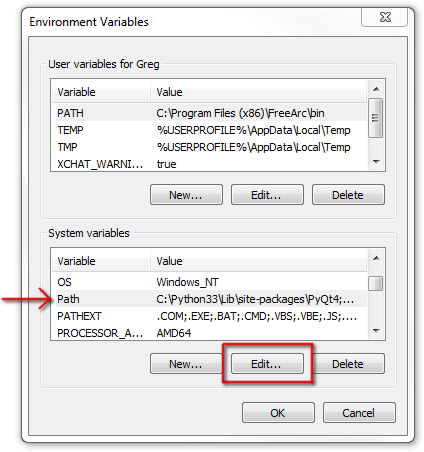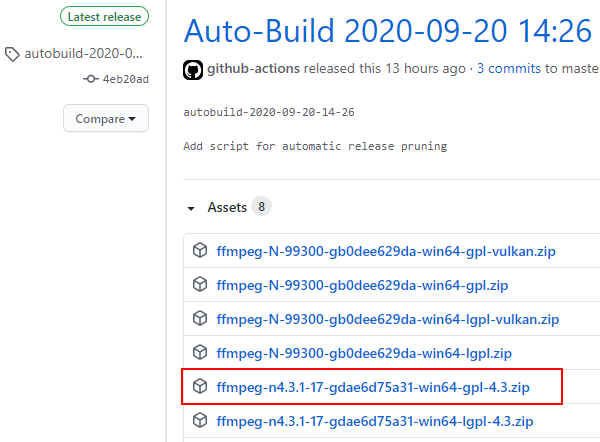

#Ffmpeg windows guide mp4#
Use ffmpeg cut mp4 video with re-encodingįfmpeg -i source.mp4 -ss 00:00:05 -t 00:00:10 -async 1 -strict -2 cut_video.mp4 Synopsis: ffmpeg -i -ss -t use ffmpeg cut mp4 video without re-encodingįfmpeg -i source.mp4 -ss 00:00:05 -t 00:00:10 -c copy cut_video.mp4 Here's a command line that will slice to 30 seconds without transcoding:įfmpeg -t 30 -i inputfile.mp3 -acodec copy outputfile.mp3ĭo you need to cut video with re-encoding or without re-encoding mode? You can try to following below command. If you want to use the right channel, write 0.1.1 instead of 0.1.0. However the audio stream will have to be re-encoded.įfmpeg -i video.mp4 -map_channel 0.1.0 -c:v copy mono.mp4įfmpeg -i video.mp4 -map_channel 0.1.0 -map_channel 0.1.0 -c:v copy stereo.mp4 You can modify a video file directly without having to re-encode the video stream.

mp4įfmpeg -i input.mov -vcodec libx264 -pix_fmt yuv420p output.mp4įfmpeg -i audio.xxx -c:a flac audio.flac Mix Stereo to Mono

$ ffmpeg -i image-%04d.jpg -c:v libx264 -pix_fmt yuv420p -vf "scale=720:-2" test.mp4 Evaluate which ratio to apply for scaling, then scale with the requisite amount of padding

$ ffmpeg -framerate 30 -pattern_type glob -i '*.jpeg' -c:v libx264 -pix_fmt yuv420p gan-1.movĬonvert image sequence of many different sizes and conform to specific frame size $ ffmpeg -loop 1 -i image.png -c:v libx264 -t 60 -pix_fmt yuv420p -vf scale=1920:1080 out.mp4Ĭonvert non-sequentially named Images in a directory $ ffmpeg -i image-%03d.png -c:v libx264 -pix_fmt yuv420p test.mp4 $ ffmpeg -f image2 -i image%d.jpg imagestovideo.mp4 $ ffmpeg -i video.flv image%d.jpg Convert Images into a Video $ ffmpeg -f concat -safe 0 -i mylist.txt -c copy output.mp4 Rotate Video by editing metadata (without re-encoding).įfmpeg -i input.m4v -map_metadata 0 -metadata:s:v rotate="90" -codec copy output.m4v Split a Video into Images Ss offset = frame number divided by FPS of video = the decimal (in milliseconds) ffmpeg needs i.e. $ ffmpeg -ss $1 -i $2 -qmin 1 -q:v 1 -qscale:v 2 -frames:v 1 -huffman optimal $3.jpg Where vf is a custom bash script as follows: You can get the list of installed codecs with:Ĭonvert WAV to MP3, mix down to mono (use 1 audio channel), set bit rate to 64 kbps and sample rate to 22050 Hz:įfmpeg -i input.wav -ac 1 -ab 64000 -ar 22050 output.mp3Ĭonvert any MP3 file to WAV 16khz mono 16bit:įfmpeg -i 111.mp3 -acodec pcm_s16le -ac 1 -ar 16000 out.wavĬonvert any MP3 file to WAV 20khz mono 16bit for ADDAC WAV Player:įfmpeg -i 111.mp3 -acodec pcm_s16le -ac 1 -ar 22050 out.wavįor i in *.mp3 do ffmpeg -i "$i" -acodec pcm_s16le -ac 1 -ar 22050 "$.mp3" doneĮxtract Single Image from a Video at Specified Frame You can get the list of supported formats with: Minimal example: transcode from MP3 to WMA:
#Ffmpeg windows guide full#
For a full list of GPUs and formats supported, please see the available GPU Support Matrix.Ffmpeg Converting Audio into Different Formats / Sample Rates Ability to add your own custom high-performance CUDA filters using the shared CUDA context implementation in FFmpeg.Create high-performance end-to-end hardware-accelerated video processing, 1:N encoding and 1:N transcoding pipeline using built-in filters in FFmpeg.Granular control over encoding settings such as encoding preset, rate control and other video quality parameters.Hardware-accelerated decoding of H.264, HEVC, VP9, VP8, MPEG2, MPEG4*, and AV1.Hardware-accelerated encoding of H.264 and HEVC*.If you have an NVIDIA GPU which supports hardware-accelerated video encoding and decoding, it’s simply a matter of compiling FFmpeg binary with the required support for NVIDIA libraries and using the resulting binaries to speed up video encoding/decoding.įFmpeg supports following functionality accelerated by video hardware on NVIDIA GPUs:


 0 kommentar(er)
0 kommentar(er)
